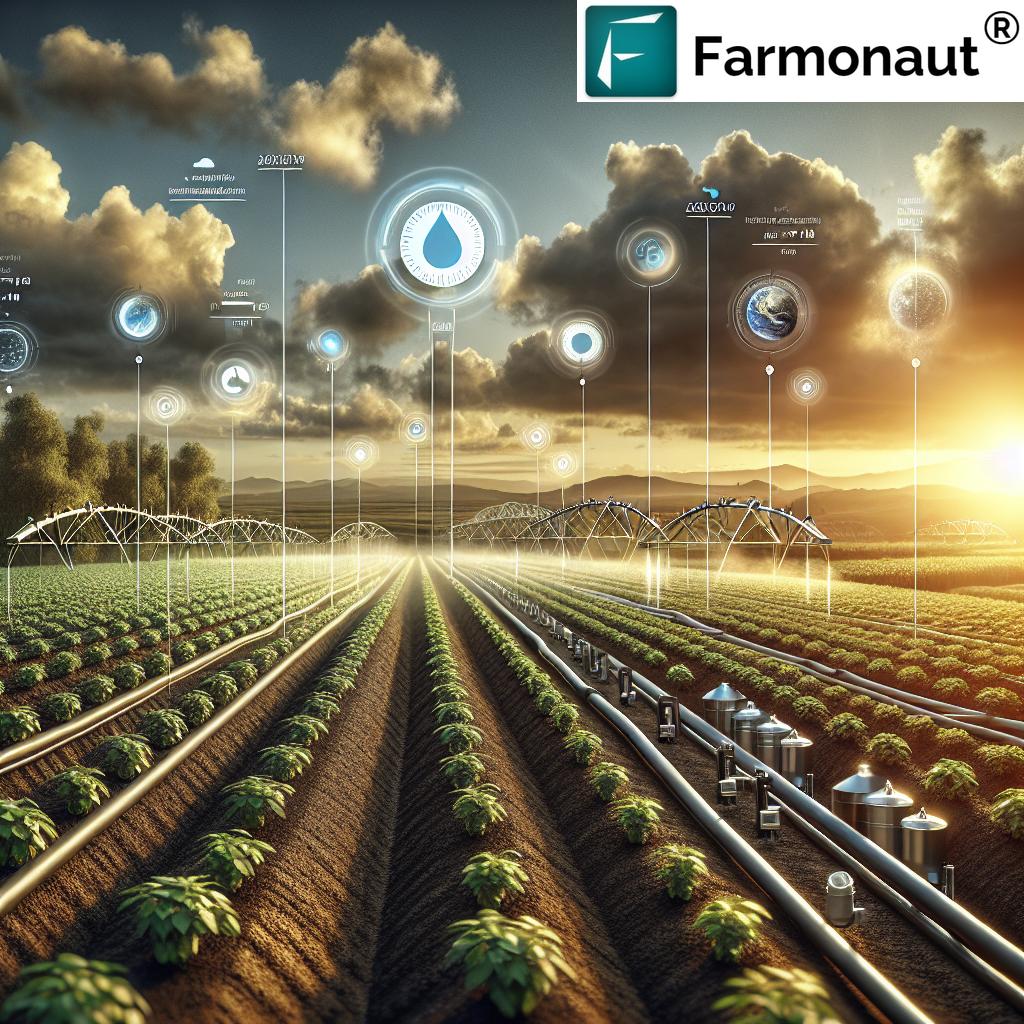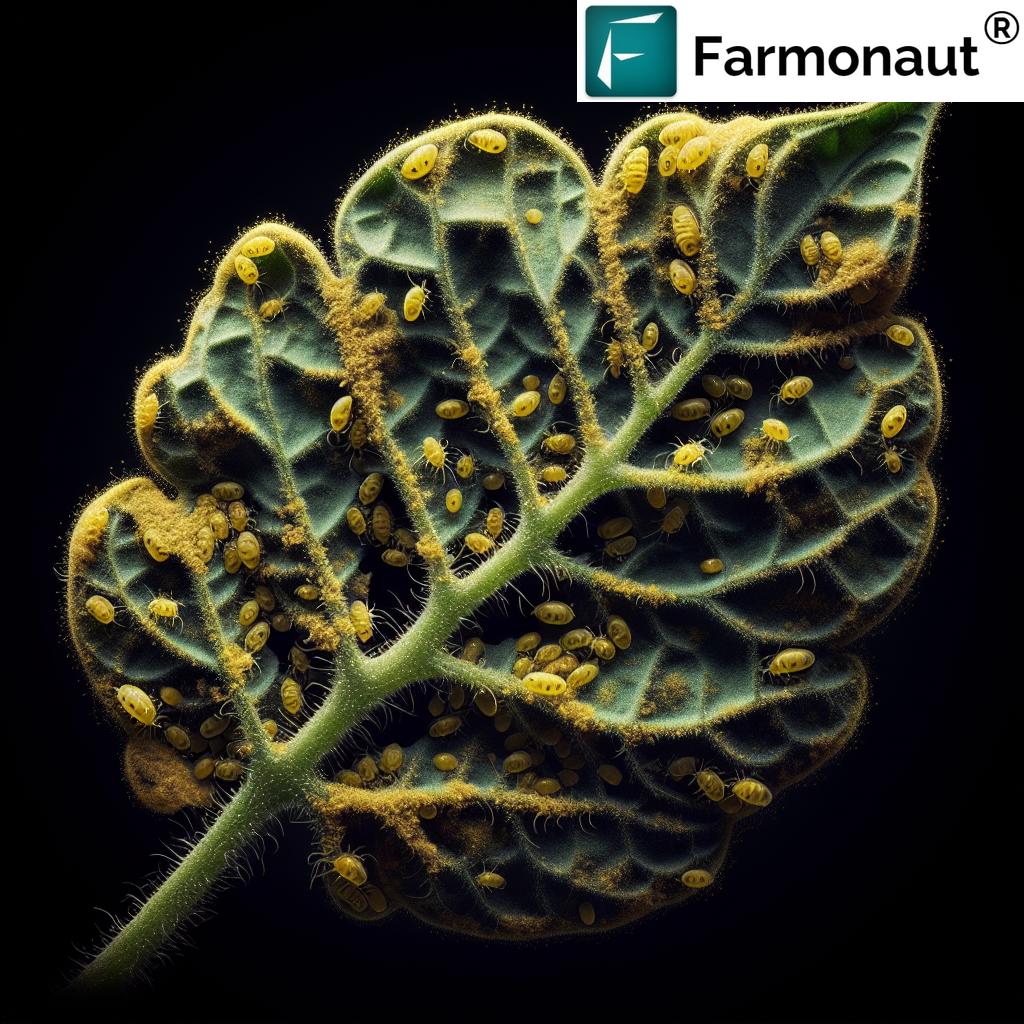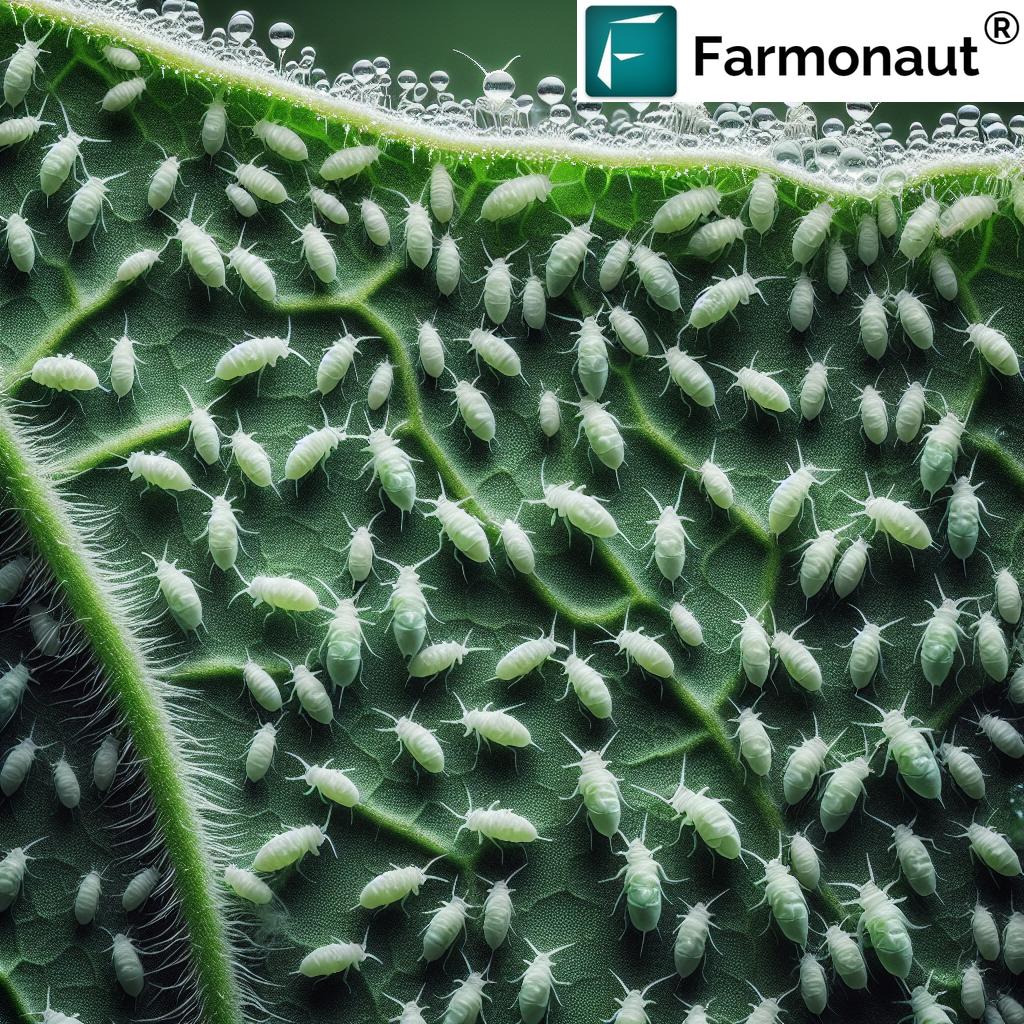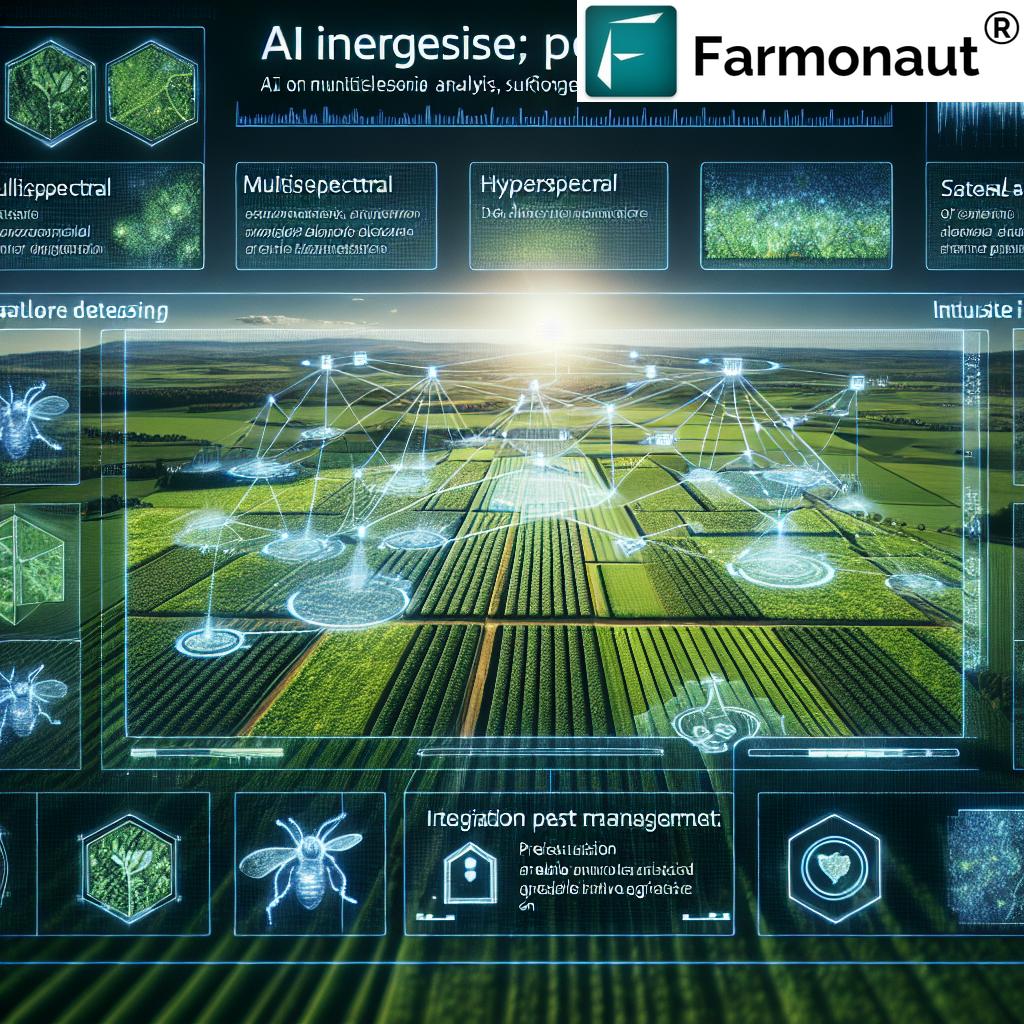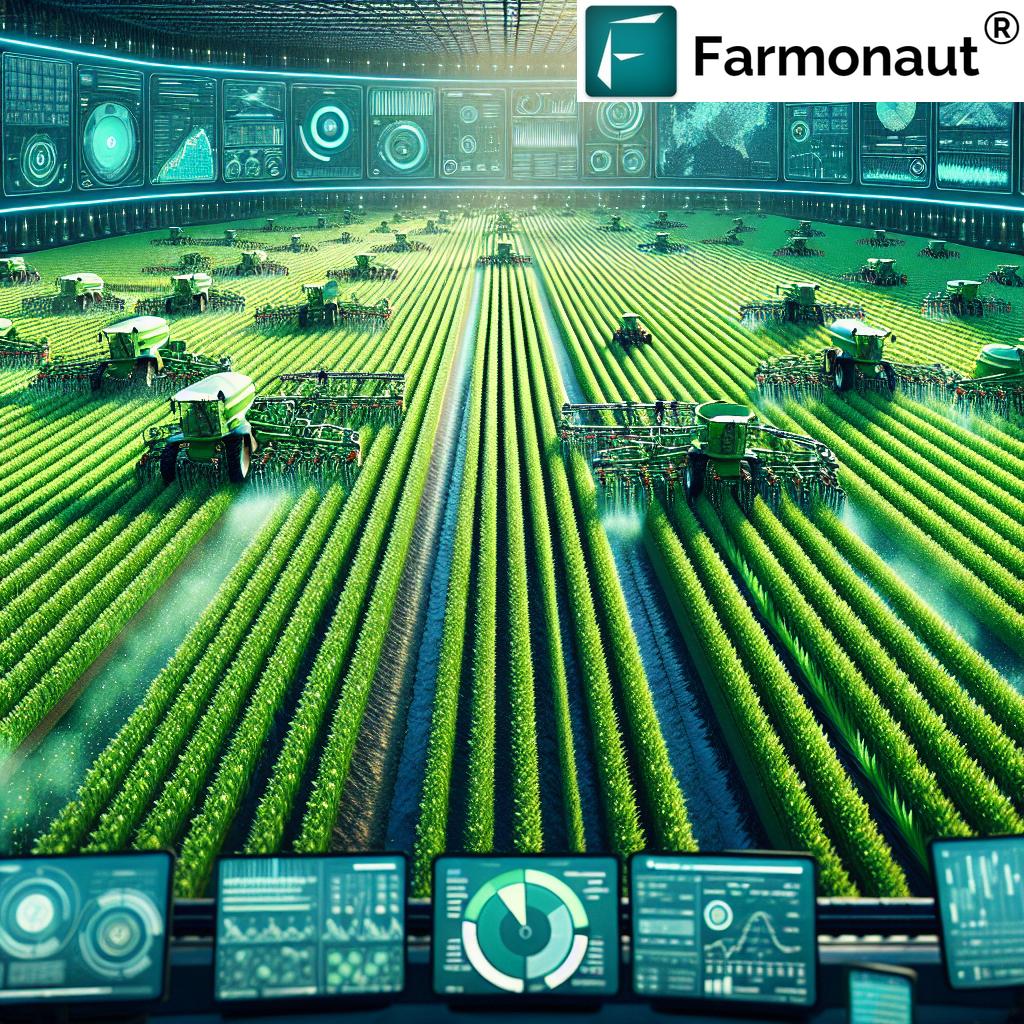Agriculture Multispectral Sensor & Wireless Agriculture Sensors: Revolutionizing Precision Farming in 2025
“**By 2025, over 60% of precision farms will use multispectral sensors for real-time crop health monitoring.**”
Table of Contents
- Introduction: The New Era of Smart Farming
- Understanding Multispectral Sensors in Agriculture
- Wireless Agriculture Sensors: Enhancing Connectivity & Real-time Data
- Core Applications & Benefits in 2025
- How Farmonaut Empowers Future Agriculture
- Comparison Table of Agriculture Multispectral & Wireless Sensors
- Technology Integration: IoT, Cloud, AI, and Blockchain
- Overcoming Challenges & The Future Outlook
- FAQ: Agriculture Multispectral Sensor & Wireless Agriculture Sensors
- Farmonaut Subscriptions
- Conclusion
Introduction: The New Era of Smart Farming
In 2025, the integration of agriculture multispectral sensors and agriculture sensors wireless technology is fundamentally transforming the landscape of modern precision farming. With an urgent global need for efficient and sustainable agricultural practices, these advancements are providing farmers with unprecedented insights into crop health, soil conditions, and vital environmental factors.
As we move further into this new era of technology-driven agriculture, the combination of multispectral and wireless sensors is making it possible to maximize both productivity and sustainability—all while driving down resource costs, improving yields, minimizing operational waste, and empowering decisions with real-time data.
This comprehensive guide explores how multispectral sensors and wireless sensor networks are revolutionizing agriculture in 2025 and beyond. We’ll discuss the technical fundamentals, real-world applications, how Farmonaut’s satellite-driven platform is making advanced crop monitoring accessible, current challenges, and what the near future holds for agriculture sensor technologies.
Understanding Multispectral Sensors in Agriculture
Multispectral sensors are devices capable of capturing image data at specific wavelength bands across the electromagnetic spectrum—including, but not limited to, the visible light (red, green, blue), near-infrared (NIR), and sometimes shortwave infrared (SWIR) ranges. In agriculture, these sensors are used to analyze how plants reflect and absorb light differently at various wavelengths, providing a window into the plant’s health, water content, nutrient levels, and susceptibility to stress factors like pests and diseases.
Let’s break down the science behind this technology:
- Plants reflect and absorb light at different wavelengths depending on health: For example, healthy vegetation strongly reflects NIR light but absorbs red light (due to chlorophyll content). This distinctive reflectance pattern enables the detection of plant stress, water deficiency, and disease—often early, before visible symptoms develop.
- Indices like NDVI (Normalized Difference Vegetation Index): By analyzing reflectance in the red and NIR bands, indices such as the NDVI can be generated to correlate directly with plant vigor, health, and biomass.
-
Multispectral image data is typically used to:
- Detect early signs of crop stress
- Optimize irrigation schedules and applications
- Tailor fertilization regimes to actual field needs
- Improve yields and reduce input waste
These agriculture multispectral sensors are a cornerstone in precision farming and modern agricultural management, especially when combined with other sensor types, wireless connectivity, and advanced platforms.
In 2025, agronomists, farmers, and precision farming professionals rely on multispectral data to:
- Monitor crop growth cycles and make timely interventions
- Detect anomalies due to drought, pests, or diseases
- Make data-driven decisions for more sustainable, resource-efficient, and profitable farming
How Do Multispectral Sensors Work?
An agriculture multispectral sensor is equipped with detectors programmed to collect reflected light at specific wavelength bands (e.g., red, green, blue, NIR). After capturing these images, analytical models convert the raw data into composite images and actionable indices.
Some advanced sensors even cover SWIR bands, further expanding detection abilities for water content, plant cellulose, and subtle crop stress levels.
Example: A drone or satellite flies over a field, capturing multispectral images. These are processed to generate NDVI maps, which indicate zones of strong growth versus stress. Such maps guide targeted applications for irrigation, fertilizer, or pesticides.
Learn more about NDVI and crop health monitoring in this video:
Wireless Agriculture Sensors: Enhancing Connectivity & Real-time Data
The deployment of agriculture sensors wireless technology has elevated traditional multispectral sensing from a periodic, manual exercise to a continuous, automated system. Wireless agricultural sensors are distributed across fields and connect via cellular networks, LoRaWAN, or other LPWANs, automatically collecting and transmitting real-time data about vital field conditions.
Key features of wireless sensors for precision agriculture include:
- Automated, continuous data collection, vastly reducing labor time and costs
- Coverage of hard-to-reach or expansive terrains (wireless networks can reach up to several kilometers)
- Multimodal sensing capabilities: Environmental sensors for soil moisture, temperature, humidity, and nutrient levels integrate with multispectral platforms
- Seamless integration with cloud-based platforms and AI-powered analytics for actionable forecasts and alerts
“**Wireless agriculture sensors can transmit data from fields up to 5 kilometers away, enabling remote farm management.**”
These capabilities are especially valuable for large-scale farm management and remote locations where traditional data collection methods are unfeasible. Real-time wireless sensor data feeds directly into decision platforms, enabling immediate responses to environmental changes, irrigation needs, or emerging crop threats.
For instance, if wireless soil moisture sensors detect below-threshold water levels, an automated alert can trigger precise irrigation, conserving both water resources and energy.
Core Applications & Benefits in 2025
By 2025, agriculture multispectral sensors and wireless agriculture sensors are pivotal tools in the digital transformation of farming, supporting an array of high-impact applications:
-
Precision Irrigation:
Sensors detect early water stress in crops, guiding automated or near-real-time irrigation only where it’s needed most, drastically reducing water waste. -
Targeted Fertilization:
Multispectral sensor data identify nutrient deficiencies via unique reflectance patterns. Fertilizers are applied only in deficient zones, improving efficiency and reducing environmental runoff and input costs. -
Early Pest and Disease Detection:
Wireless and multispectral sensors detect subtle changes in crop reflectance that signal the presence of pests or diseases—enabling early intervention and minimizing yield losses. -
Yield Prediction and Biomass Estimation:
Continuous crop monitoring provides highly accurate models for yield prediction, directly supporting supply chain planning and market efficiency. -
Reduction in Carbon Footprint:
Sensor platforms optimize resource use, supporting environmental initiatives and regulatory compliance.
Farmonaut’s Carbon Footprinting platform allows farms and agribusinesses to monitor, report, and manage their carbon emissions, aligning agricultural operations with sustainability goals. -
Supporting Sustainable Practices and Traceability:
Precision tools minimize waste and enable blockchain-based traceability solutions.
Learn how traceability adds transparency to supply chains with Farmonaut
.
The Impact on Farm Management, Yields, and Resource Optimization
The true value proposition of these sensors in 2025 lies in their ability to deliver actionable intelligence directly to the farm gate. With up-to-the-minute reports on crop vigor, water status, and potential pest threats, farmers can optimize daily operations and seasonal care schedules—significantly boosting crop yields and overall farm profitability.
Additionally, these technologies offer crucial support to regulatory compliance, sustainable resource use, and transparent traceability, all of which are fundamental to future-proofing agriculture in the face of climate change and evolving market demands.
How Farmonaut Empowers Future Agriculture
As a satellite technology leader, Farmonaut is at the forefront of making satellite-based multispectral crop monitoring both affordable and accessible for individual farmers, businesses, and governments. By leveraging multispectral satellite imagery and AI-driven analytics, Farmonaut provides a holistic solution for:
- Real-time crop health assessment using indices like NDVI
- Soil moisture analysis for precision irrigation
- Resource optimization tools, including fleet and machinery management
- Traceability and blockchain-based records for certified supply chains
- Comprehensive environmental impact monitoring
- Seamless integration with mobile apps & APIs for remote field access:
Through these capabilities, our platform empowers daily and seasonal farm management with high-resolution, actionable multispectral data—whether the user is a smallholder or a large enterprise overseeing thousands of hectares.
Explore Farmonaut’s fleet and logistics optimization tools for smart large-scale agriculture: Farmonaut Fleet Management
Or streamline expansive farm oversight with Farmonaut Large-Scale Farm Management tools.
Want to build your own agriculture app or integrate satellite and sensor data into your business platform?
Use Farmonaut’s API and read the API Developer Docs.
Comparison Table of Agriculture Multispectral and Wireless Sensors
| Sensor Type | Key Function | Estimated Data Accuracy (%) | Estimated Wireless Range (meters) | Power Source | Typical Applications | Environmental Impact |
|---|---|---|---|---|---|---|
| NDVI Multispectral Sensor | Measure vegetation vigor, biomass, and stress using NIR & Red bands | 90-95% | N/A (satellite/drone-based) | Solar/battery (device) or external (satellite) | Crop health monitoring, early disease detection, fertilization management | Low |
| Soil Moisture Wireless Sensor | Monitor soil water content at root level | 85-90% | 1,000 – 5,000 | Battery/solar | Precision irrigation, drought stress detection | Low |
| Climate Wireless Sensor | Measure field temperature, humidity, light intensity | 88-93% | Up to 5,000 | Battery/solar | Greenhouse management, disease modeling | Low |
| Nutrient Wireless Sensor | Monitor soil macro/micronutrient levels | 80-88% | 500 – 3,000 | Battery/solar | Site-specific fertilization management | Medium |
| Environmental Wireless Sensor | Track rainfall, wind speed, air quality | 85-90% | 5,000+ | Battery/solar | Forecasting, risk management, compliance | Low |
Technology Integration: IoT, Cloud, AI, and Blockchain in Agriculture Sensors Wireless Systems
The cutting-edge deployment of agriculture multispectral sensor and agriculture sensors wireless platforms is underpinned by a fusion of advanced digital technologies:
- IoT (Internet of Things): Connects hundreds of distributed sensors into a centralized monitoring system, accessible from anywhere.
- Cloud Computing: Aggregates massive volumes of sensor data, enabling scalable storage, high-speed processing, and integration with analytics models.
- AI & Machine Learning: AI models interpret complex sensor data, detect abnormal patterns, predict yield outcomes, and auto-generate risk alerts for farm managers.
- Blockchain Technology: Enables traceability and transparent data sharing
for compliance and market confidence. Learn more about Farmonaut Traceability Solutions.
By integrating multiple sensors—multispectral, soil, climate, and others—with robust digital platforms, farmers and decision-makers can interpret field data in context, ensuring truly data-driven management at every step.
Overcoming Challenges & The Future Outlook of Agricultural Multispectral & Wireless Sensors
Despite the clear benefits, some challenges to large-scale adoption of agriculture multispectral sensor and agriculture sensors wireless systems remain in 2025. These include:
- Initial Setup Costs: While subscription models (such as offered by Farmonaut) dramatically reduce barriers compared to traditional hardware investments, some up-front expense for network infrastructure and training still exists.
- Data Management Complexity: Vast volumes of continuous sensor data can overwhelm unprepared operations. User-friendly dashboards, automatic analytics, and API integration address this, but ongoing education and technical support are needed.
- Training and Capacity Building: Farmers and agronomists require training to interpret sensor outputs and model-based insights effectively for practical action.
The Path Forward: Future Trends in Sensor Technologies for Precision Agriculture
We foresee strong trends through 2025 and beyond:
- Miniaturization and lower-cost sensors, making them accessible to smallholder farmers globally
- Integration with drones and autonomous ground vehicles for even finer spatial control and rapid coverage
- Increasing use of AI-powered advisory systems (like Farmonaut’s Jeevn AI) for predictive analytics, customized field recommendations, and risk forecasting
- Enhanced blockchain traceability linking on-farm sensors to consumer and regulatory trust—from seed to store
- Wider adoption of subscription-based monitoring over traditional hardware ownership models
In sum, agriculture multispectral sensors and agriculture sensors wireless are set to become the foundational tools for sustainable, data-driven farming worldwide—empowering a future of higher yields, lower resource waste, traceable food systems, and climate-conscious agricultural management.
FAQ: Agriculture Multispectral Sensor & Wireless Agriculture Sensors
Q1: What is a multispectral sensor, and how is it different from regular cameras?
Multispectral sensors capture image data across multiple discrete wavelengths (beyond what’s visible to the human eye), using NIR and SWIR bands, unlike ordinary cameras that only capture red, green, and blue light. This allows detailed monitoring of vegetation health, water stress, and nutrient levels in precision farming.
Q2: How do wireless agriculture sensors transmit data over such long distances?
Wireless agriculture sensors use low-power wide-area networks (LPWANs—like LoRaWAN) or cellular connections to send sensor data from the field to centralized platforms. These networks can cover up to several kilometers, enabling remote and automated farm management.
Q3: What are the main benefits of integrating multispectral and wireless sensors in 2025?
The integration allows for real-time, continuous monitoring of critical crop and soil parameters, early stress and disease detection, precise management of water/fertilizer/pesticide inputs, improved sustainability, and superior yield forecasting—all leading to lower costs and higher profitability in agriculture.
Q4: How does Farmonaut support farmers and agribusinesses with these sensor technologies?
We provide satellite-driven, AI-powered monitoring platforms and tools for crop health, soil, and resource management, accessible via app, web, and API. Farmonaut solutions are cost-effective, scalable, and easy to use for all types of agricultural stakeholders.
Q5: What are NDVI and EVI indices in the context of multispectral sensing?
NDVI (Normalized Difference Vegetation Index) and EVI (Enhanced Vegetation Index) are analytical tools derived from multispectral data. They correlate directly with plant vigor, biomass, and overall crop health, enabling targeted interventions and efficient resource management in farming.
Farmonaut Subscriptions
Conclusion: Driving Precision Farming into the Future
The revolutionizing integration of agriculture multispectral sensor and agriculture sensors wireless platforms in 2025 is enabling a new era of precision agriculture—defined by powerful data, automatic crop monitoring, next-level resource management, and unmatched sustainability. While some challenges remain, the trend toward holistic, connected sensor networks is clear and accelerating.
With our innovative, satellite-powered solutions, Farmonaut is committed to bringing these advanced technologies within reach of every farmer, agribusiness, and government worldwide.
From NDVI-based crop analysis and real-time soil moisture monitoring to full-fledged blockchain traceability and environmental impact tracking, the path to efficient, resilient, and sustainable farming has never been brighter.
Explore the API for Developers & Businesses
Discover Satellite-based Verification for Crop Loans & Insurance by Farmonaut







